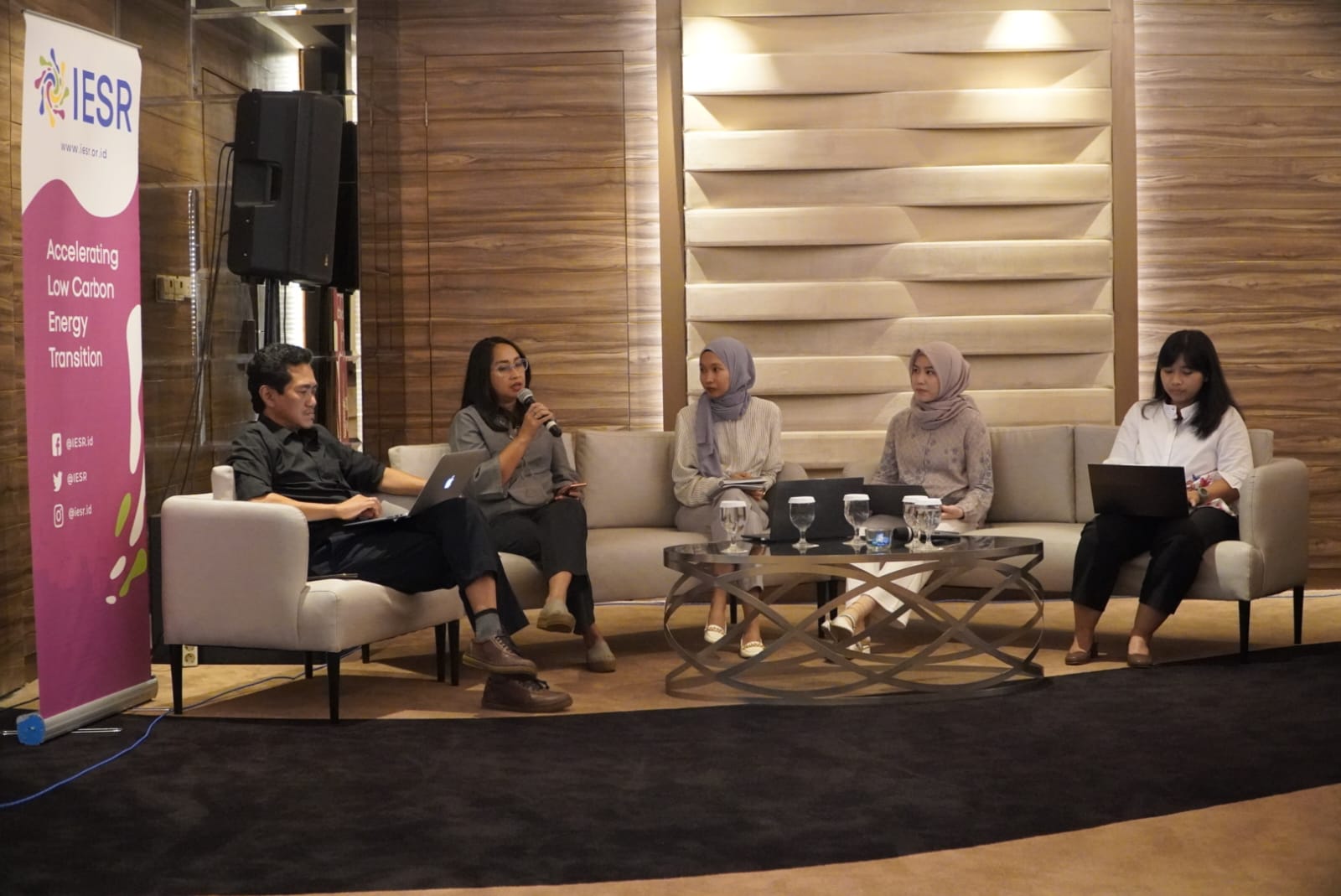Jakarta, December 6, 2022 – Nowadays, climate change in the world affects increasing the intensity of climate disasters and threatens human life and biodiversity. Thus, government commitment and concrete targets are needed to reduce emissions, like setting a more ambitious target in the Enhanced Nationally Determined Contributions (NDCs) document, which Indonesia submitted in September 2022. Its document contains an increase in the target for reducing greenhouse gas (GHG) emissions by around 2%.
Based on the latest NDC document, Indonesia will reduce emissions with an unconditional scenario of 31.8% and international assistance (conditional) of 43.2% in 2030. However, based on an assessment of Indonesia’s climate targets and ambitions by the Institute for Essential Services Reform (IESR) which is a member of the Climate Action Tracker (CAT), a consortium of three think tanks that monitors and assesses climate change policies in 39 countries and the European Union. IESR and CAT estimate that Indonesia’s NDC has not been linear, with a target of 1.5°C. It’s more robust numerically but still not driving further climate action. Indonesia is likely to achieve its targets (except forestry) without additional effort, while its emissions are almost double today. For this reason, Indonesia needs to update the Business-As-Usual Scenario (BAU) so that it is linear with more vital targets.
“Indonesia contributes to global warming. We need a more ambitious greenhouse gas (GHG) reduction target. The later we block GHG, the greater the risk of climate disaster. For example, floods and tornadoes indicate that the costs to deal with these situations are also higher, and an appropriate solution is needed. For this reason, we need to calculate the environmental costs for climate change mitigation and adaptation,” explained the Executive Director of IESR, Fabby Tumiwa, at the launch of the results of the CAT assessment of Indonesia’s climate action and policies.
Shahnaz Nur Firdausi, Energy, and Climate Researcher, IESR, stated renewable energy only account for 13.5% of the power generation mix in 2021. Indonesia needs to make substantial progress in meeting the 23% renewable energy target by 2025. Several studies have shown how Indonesia can increase its renewable energy potential far beyond current plans and supply 100% of its electricity from renewable sources by 2050.
“Although coal still plays a major role in Indonesia’s electricity system, the government has planned to discontinue the PLTU. However, to meet the temperature limit of 1.5°C, coal use in Indonesia must decrease by 10% by 2030 and be phased out by 2040. Indonesia will need significant financial support to plan for the retirement of PLTU under the Paris Agreement,” Shanaz explained.
Deputy Director for Environmental Law Enforcement at National Development Planning Agency (Bappenas), Erik Armundito, emphasized that his party has a low-carbon development policy. It’s integrated with the national priorities of the 2020-2024 RPJMN, complemented by strategy indicators and clear targets every year.
“The macro indicators mean percentage of potential GHG reduction with a target of 27.3% in 2024 and the percentage of reduction in GHG intensity with 31.6% in 2024. Setting this target is Indonesia’s step forward in environmental preservation. In addition, Bappenas has the AKSARA application for monitoring, evaluating, and controlling the reduction of GHG emissions resulting from low-carbon development,” explained Erik.
Madani Foundation Executive Director Nadia Hadad said collaboration between various parties is needed to encourage the achievement of the 1.5°C targets. Various parties must have a role and contribute.
“We all have a role. This CAT report is not to criticize but to encourage better steps. Everything we have done to save the earth; for this, we need accountability and transparency,” said Nadia Hadad.
Mahawan Karuniasa, Chair of the Indonesian Network of Climate Change and Forestry Experts (APIKI), said carbon emissions produced by all countries in the world are projected to be no more than 33 gigatonnes in 2030 to keep the earth’s temperature no more than 1.5°C. However, the estimated carbon emissions produced reach 58 gigatonnes.
“If there is NDC implementation in all countries, then the estimated emissions can decrease to 53-56 gigatonnes in 2030. It means there is still a huge gap between 20-23 gigatonnes. When all countries, including Indonesia, cannot fill this gap, we can reach above 1.5°C,” said Mahawan.
Sonny Mumbunan, an economist and researcher from the Research Center for Climate Change at the University of Indonesia, believes it is also necessary to discuss the climate finance section in depth in the Climate Action Tracker report.
“When Indonesia became a member of the G20 with the narrative of having high economic growth, this became a dilemma for Indonesia. Remember, Indonesia also still needs funds from other countries. It also affects how we approach the energy sector, the land-based sector as well as the loss and damage sector. It seems that Indonesia needs a different approach based on its profile, which is between developed and developing countries,” said Sonny.
Climate Action Tracker is an independent scientific analysis initiative that tracks countries’ climate actions and measures them against the globally agreed Paris Agreement goal of holding warming well below 2°C and pursuing efforts to limit warming to 1.5°C. CAT has provided an independent analysis of around 40 countries since 2009. CAT members include Climate Analytics, the New Climate Institute, and the Institute for Essential Services Reform (IESR), which joined as partners in 2022.

